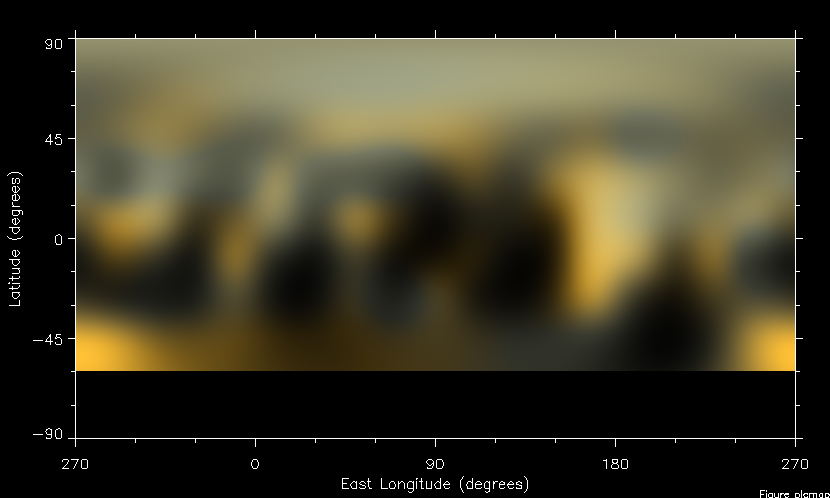Detection
The detection question is easy: we can't. It's not like in the movies. We don't have telescopes sweeping the sky like radar. We can't zoom and enhance.
To get an idea of Earth's detection capabilities, just look at our best picture of Pluto taken from Earth (actually Low Earth Orbit).

This is a composite of hundreds of images taken over the course of a year by the Hubble Space Telescope, and it is 1000 km wide. If your spacecraft is 1km wide, huge by spacecraft standards, it is 1000 times smaller than Pluto and would be a single pixel, if that.
An Extrasolar Maneuvering Object!
We do now have some wide-field instruments and sky surveys constantly sweeping the sky looking for minor planets and asteroids, but at the distance of Pluto a ship-sized object would not even register.
Your ship would eventually be spotted as it moved closer, much closer, and would be registered just as some new asteroid. Scientists would take note of the new object, more telescopes would start observing to determine its orbit, and they'd eventually notice a few things.
First, it's headed for Earth. This would get it more attention as a possible threat to Earth. This would not cause a panic, we detect these all the time, and as we take more observations and get a more accurate orbit we're more and more confident it will miss. But observations will reveal the next issue...
It's extrasolar! Meaning its orbit indicates that it must have come from outside our solar system. The discovery of 'Oumuamua recently caused a stir, but it was still a scientific curiosity. This would cause more observations. Eventually they'd realize...
It's maneuvering! A hunk of space-rock should follow a predictable orbit around the Sun. Any corrections and maneuvers the ship makes would cause it to not follow predictions. However, unless it's something really dramatic, there Earth scientists would still not label it a spacecraft and would be extremely hesitant to do so. There are plenty of reasons for "non-gravitational acceleration" and scientists will search for a natural explanation.
As the ship gets closer to Earth it will have to maneuver more dramatically to achieve Earth orbit and the evidence will mount that there can be no natural explanation, or it will get close enough that it can be directly imaged. By that point, the ship is practically on top of us.
Extremely fast, but still slow.
Because our detection capabilities are so bad, and because it would take us quite some time to determine that it's not a natural object, your spaceship has to move quite slowly... but still far, far faster than any man-made object. For example, the journey from Earth to Mars takes months, in part because we're coasting most of the way. New Horizons, one of the fastest spacecraft ever, took almost 10 years to reach Pluto.
So you can choose however fast you like for your spacecraft to go to get your week, it will still be fantastically fast compared to Earth spacecraft.
So basically the easiest FTL 'jump' is the one between places of no planets or asteroids or suns.
If so, that ship will have to come out of FTL waaay before Pluto.
Which is the last "planet"?
What is and is not a "planet" is decided less by physics and more by human definition. For example, Pluto is no longer considered a "planet" by humans, it is a "dwarf planet", but that should not affect an alien's FTL drive.
There's plenty of other dwarf planets past Pluto, including some, like Eris, which are more massive than Pluto.
In addition, the solar system doesn't just stop at Pluto. There is the Kuiper Belt which is a second asteroid belt far larger and more massive (but less dense) than the belt between Mars and Jupiter. Neither of these are very dense at all, certainly not like depicted in the movies, and we send spacecraft through hem all the time.
Neptune... or Saturn.
As you say, FTL drives are affected by gravity, but Pluto and other Trans-Neptunian Objects are far, far too small and spread out to have an influence.
Instead I'd suggest they need to drop out of FTL because of the first really massive object which can influence its entire orbit: Neptune. It is nearly as far out as Pluto, and it is massive enough to be a plausible influence.
Or you can decide Neptune and Uranus were on the other side of the solar system and it jumps in near Saturn. It really doesn't matter, we still wouldn't see it.
Just Don't Mention It.
In the finest tradition of good sci-fi, if you don't have to explain it don't explain it. Especially if you're not an expert in that field.
Since our detection capabilities are so bad, you don't have to explain the details at all. As above, the first Earth will know of it is vague observations of some new asteroid. If it comes up later in the story, all you need the aliens say is their FTL drive is influenced by gravity and they had to come out of FTL because they got too close to the Sun. Done.

